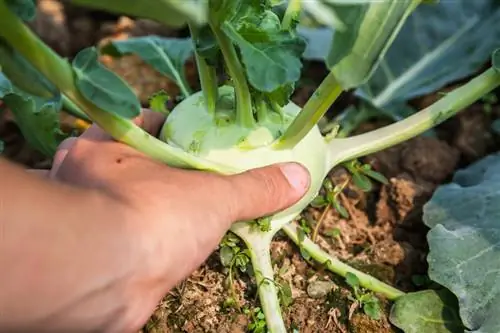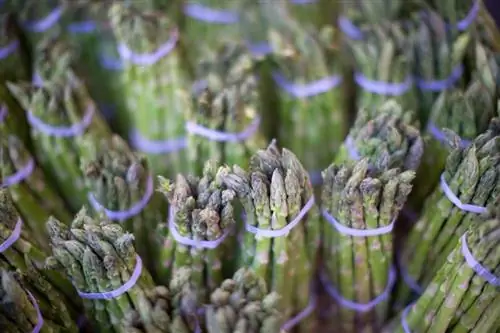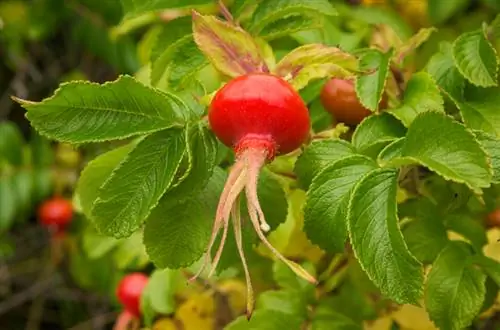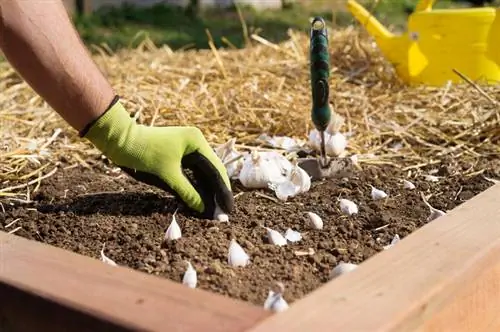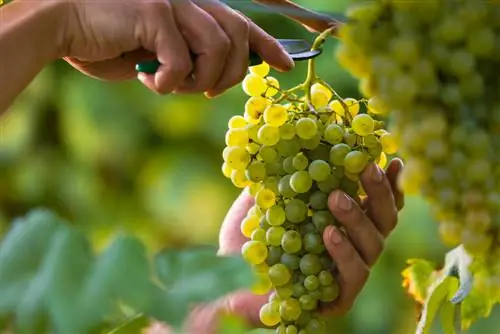- Author admin [email protected].
- Public 2023-12-16 16:46.
- Last modified 2025-01-23 11:22.
Kohlrabi is a variety of vegetable cabbage, behind which the species Brassica oleracea is hidden. The thickened sprouts produce a tasty vegetable. Their shape varies from spherical to flat-round to oval and the coloring also varies depending on the variety.
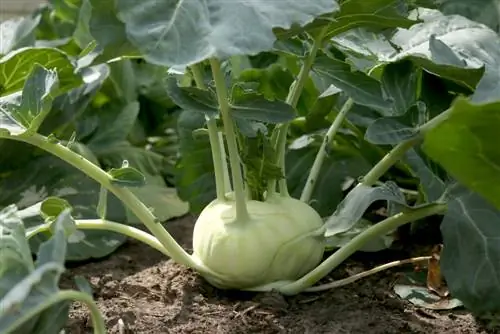
When is kohlrabi season?
The kohlrabi season extends from May to October, with early kohlrabi having a milder taste and autumn varieties having a longer shelf life. By planting at different times, you can harvest the vegetables from spring to autumn.
How kohlrabi grows
The vegetable is a biennial plant. The harvest takes place in the first year, because in the following season the cruciferous plant develops inflorescences and seed pods. The main season extends from May to October, with harvests also taking place from March to April or in November after early or late cultivation. The thickened part of the main shoot axis is harvested. Above the second or third leaf, the shoot axis grows in width, which is referred to as primary thickness growth. So kohlrabi is not a root vegetable.
The Harvest Window
Kohlrabi has no set harvest time. You can grow the vegetables from spring to autumn and harvest them for a correspondingly long time if you plant the plants in the bed at different times. If you started cultivating immediately after winter, the first tubers will be ready to harvest before Easter. The later the cultivation takes place, the further back the harvest window moves.
Growing in the garden
There are whitish, light to strong green or reddish and purple varieties with variable sowing dates, but they overlap. With the right combination of varieties and different planting times, the season can be fully exploited. Early kohlrabi tastes particularly mild, but can only be stored for two to three weeks. Autumn varieties can be stored for several months.
Requirements
Kohlrabi proves to be sensitive to fluctuations in soil moisture. This can cause the tubers to split. Young plants need warmth for he althy growth. Adult specimens can also tolerate low temperatures, although most varieties should not experience frost in autumn.
Harvest tips
As soon as the flat to spherical kohlrabi tubers have reached the size of a tennis ball, the harvest time begins. The vegetables are ready to eat six to eight weeks after planting. At this point the tissue is tender and ideal for eating raw. If the harvest takes place in the tenth to twelfth week, the yields will be larger. However, there is then the risk that the kohlrabi will become increasingly woody. This risk is higher with white varieties than with blue cultivars. These grow slower and have a slightly longer ripening time.
Recognizing the ideal ripening time:
- Leaves have a rich green or purple color
- wilted and yellowish leaves indicate overripeness
- burst tubers should be harvested as quickly as possible
Tip
The 'Super Schmelz' variety produces very large vegetable tubers and therefore needs more time in the bed. Sowing can take place from March to August. Harvesting is possible until the first frosts in October.


